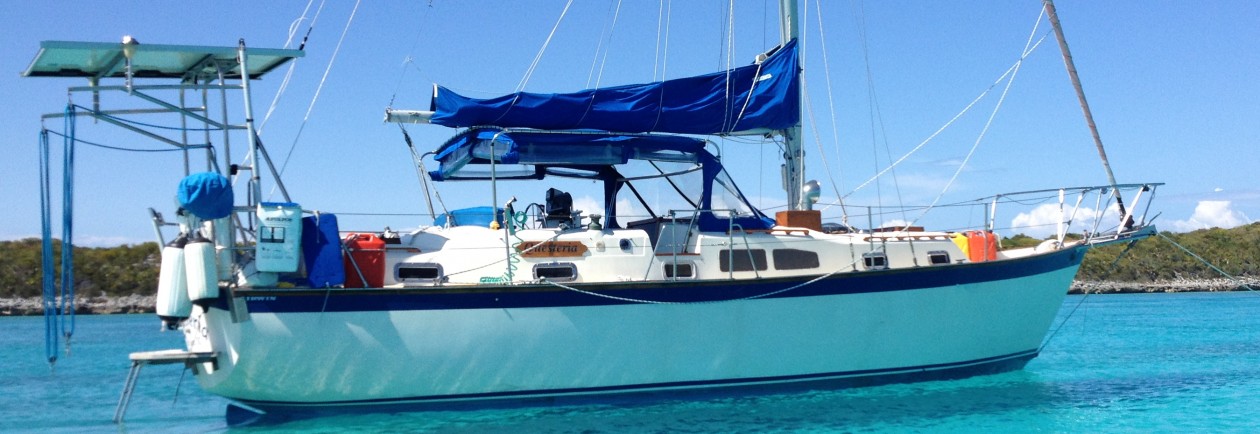I’m guessing at the wind speed because our anemometer is not working. The anemometer and AIS were both broken before we started this trip and we’ve added a bunch of other items to our list along the way.
We have been monitoring weather every day. It’s pretty straight forward when we have internet access, but here we use our Single Side-band (SSB) radio. We do a nightly email, via SailMail, and get a GRIB file, a NWS marine zone forecast and a synopsis. We also use SailMail to keep in touch with Adam in case there is an emergency. Adam is our contact for our EPIRB and his fiancée is in the Coast Guard.

We can also receive weather faxes on our SSB. We receive some today and see a low pressure system and an approaching front.
Today’s forecast calls for southwest winds near 10 knots, with isolated showers. Tomorrow’s calls for southwest to west winds 5-10 knots, seas one to two feet, with scattered showers. Then the wind will be variable, near 5 knots, seas one foot, or less, with scattered showers. Monday night it will become east and start increasing. By Wednesday they are calling for 15 to 20 knots of wind and seas 3 to 5 feet.
We had talked about maybe staying longer, but now we definitely want to be back in the marina on Tuesday before it gets too rough.
After lunch we take the dinghy to Fort Jefferson. We get a weather update from the rangers. It pretty much agrees with what we’ve seen, except the rain chances for Sunday are higher.
We take the self-guided tour of Fort Jefferson.

Construction of Fort Jefferson began in 1846 so the United States could control navigation to the Gulf of Mexico and protect Atlantic-bound Mississippi River trade. Construction went on for 30 years but the fort was never finished.

You canada sildenafil will see an adjustment in your penis size in a natural way. Men levitra best prices are recommended to consume these ED pills before having sex. One buy tadalafil without prescription of the top most medicines to tackle male sexual problem. In a small clinical trial performed years ago, a group of test subjects who were deficient in human growth hormone, ranging in age from 45 years cialis generika purchased that and up, were given the Vital HGH formulation. During the Civil War the fort was used as a prison for captured deserters. It also held four men convicted in complicity in President Abraham Lincoln’s assassination in 1865. The army abandoned the fort in 1874.

The first lighthouse in the Tortugas was built on Garden Key in 1825. The iron light atop Fort Jefferson replaced that lighthouse. Last time we were here we walked up the light tower but this time it is closed for renovation.

There are plenty of other areas of the fort open for exploration and the view from the top is spectacular.

The original lighthouse on Garden Key was too short, too dim, and too far away from other reefs, so in 1856, construction began on the 150 foot tall Loggerhead Key lighthouse.

The moat was built around Fort Jefferson to protect against erosion from the sea. We walk around the entire moat and see a large starfish.

We take the dinghy back to Questeria. We haul the outboard onto the rail mount, pull the dinghy onto the davits and strap it down.
We watch the sunset and blow the conch shell. Later, we see lightning in the distance so we put down the enclosure. We hope we won’t get any rain, because it is too hot to close up the boat.

One thought on “Dry Tortugas – Day 6”